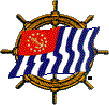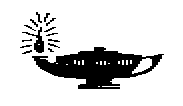Junior Navigation
This site is provided as a means of communications with the USPS National Offshore Navigation Committee (ONCom). We welcome your questions and comments on our courses, Learning Guides, and associated materials.
R/C Victor B. Schwartz, SN
Stf/C Pat Antoni, SN
Stf/C Stan Klein, SN
Topics
|
|
|
|
|
|
News
 New Celestial Tools Program
New Celestial Tools Program
There is a new version (v5.6.0) of the Celestial Tools program on the ONCom Tools web page. This version includes additions/changes and a bug fix. See the Revision History for details. (03 May 17)
JN14 Errata
An updated errata sheet is available on the JN Downloadable Material page. (31 Jul 16)
Supplement Material - Meridian Transit Methods
An updated PowerPoint presentation is available that discusses three different methods of determining the Zone Time of Meridian Transit. It is available on the JN Course Downloads page. (06 Mar 16)
Notice for Apple Computer Users
Apple users have options to use their Mac computers to run Windows programs listed as useful tools for JN students on the Software and Tools web page. This paper (445KB, PDF) has information on this topic, along with instructions on how to use a free native Mac program that emulates Windows on your Mac to run these programs. (11 Jan 15)
Updated Plottool program
An additional version of Plottool that is compatible with 64-bit Windows is now available. Version 2.0 can be downloaded from the ONCom Tools web page. Note that there is no need to install this version if you already have a working copy of Plottool on your computer. (06 Aug 14)
On-The-Water Component to the Junior Navigation Course
The new Junior Navigation On-The-Water Teaching Aid Guide is now available for download. (18 Feb 12)
USPS Local Telephone Number in Course Manuals
Some Junior Navigation course student and instructor manuals have an incorrect local telephone number for USPS Headquarters on the Acknowledgments Page. The correct local telephone number is 919-821-0281. The toll-free number is still 1-888-367-8777 (1-888-FOR-USPS). (21 Dec 10)
Sight Plot Update
Before the days of GPS, it was customary to plot an estimated position (EP) when only one Line of Position (LOP) was available for positioning. As you know, the EP is that point on an LOP which is closest to the reference DR position. Now that GPS positions are available, there is no longer a need for an EP as long as the GPS is operating properly. If there is no reason to question the GPS accuracy, we can reduce a sight from the GPS position and use the resultant LOP to determine our sight-taking accuracy. The important point to remember is that EPs are associated only with DR reference positions; sight accuracy is associated with GPS or Known Position (KP) reference positions.
The following procedure indicates how sights are to be plotted and labeled on CLS or UPS plotting sheets:
Plot and label the reference position, which can be a DR, a KP, or a GPS position. Lay out the intercept (as a dashed line) in the direction of the azimuth (toward or away). At the terminus of the intercept, construct the LOP perpendicular to the intercept. Label the LOP above the line with the zone time of the sight and below the line with the name of the body. If the reference position is a DR, indicate the EP at the intersection of the intercept and the LOP with a square, and record the EP coordinates at the bottom of the CLS form. If the reference position is a KP or GPS position, an EP is not meaningful; just record the sight error (SErr) at the bottom of the CLS form as the distance in nautical miles from the known position to the LOP. Until the word reaches everyone in the field, exam answers or sight folders won't be marked wrong if the old EP convention is used. (29 Oct 08)
Junior Navigation Course Description
Junior Navigation is the first in a two-part program of study in offshore navigation, followed by the Navigation course. It is designed as a practical "how to" course. Subject matter includes:
- Precise time determination
- Use of the Nautical Almanac
- Taking sextant sights of the sun
- Reducing sights to establish lines of position
- Special charts and plotting sheets for offshore navigation
- Offshore navigational routines for recreational craft
- Electronic and computerized offshore navigation
In Junior Navigation, the student will continue to use GPS as the primary position sensor, as they learned to do in Piloting and Advanced Piloting. However, the offshore environment poses many different elements for consideration by the Navigator. Ocean currents, wind, and sea state all affect a vessel's performance over the longer passages.
Also, visible terrestrial landmarks are no longer available to the navigator as reference points. In the Junior Navigation course, the student will learn to substitute celestial objects such as the sun as reference points. The course begins with the study of celestial navigation, teaching the student to take sights on the sun with a marine sextant and derive a line of position from that observation. Next, the student will apply the principles learned in Advanced Piloting, and plot a running fix from two sun sights taken about four hours apart. Once the student has learned the basics of celestial sight reduction, the course continues with planning, positioning, and checking one’s position in the offshore environment, using both electronic and celestial tools.
The JN14 Instructor Manual for this course includes lesson plans for each chapter and comes with a PowerPoint CD that contains class presentations, quiz and homework answers. The chapter 13 Practice Cruise, and some other homework answers, shown in the Instructor Manual (IM) were calculated using appropriate mathematic methods to produce accurate reproducible answers. Students using the course required graphical methods, are not expected to obtain the identical answers as listed in the IM. Grading tolerances will be allowed.
There are two examination elements for the JN course, the Sight Folder and an Open Book Exam. The sight folder is graded at the squadron level. The Sight Certification Form (SC07) must be submitted with the completed open book exam for the exam to be evaluated when it is submitted to Headquarters.
Check out the Education Department Catalogue for ordering information of the Junior Navigation JN14 course and instructor materials. (06 Mar 16)
Questions or Comments?
If you have any questions or comments about the Junior Navigation course, please contact the National Offshore Navigation Committee chair by e-mail, phone or postal service mail. Please be sure to keep your SEO and/or DEO advised of any correspondence you may have with the National committee. Addresses for the National ONCom chair are listed in The ENSIGN and on the Committee Chairpersons page.
We will try to answer your questions as soon as possible, but please allow 5 working days for an answer.
 |
|
|


